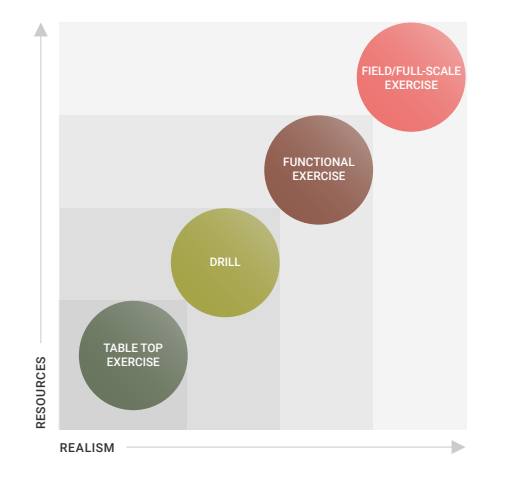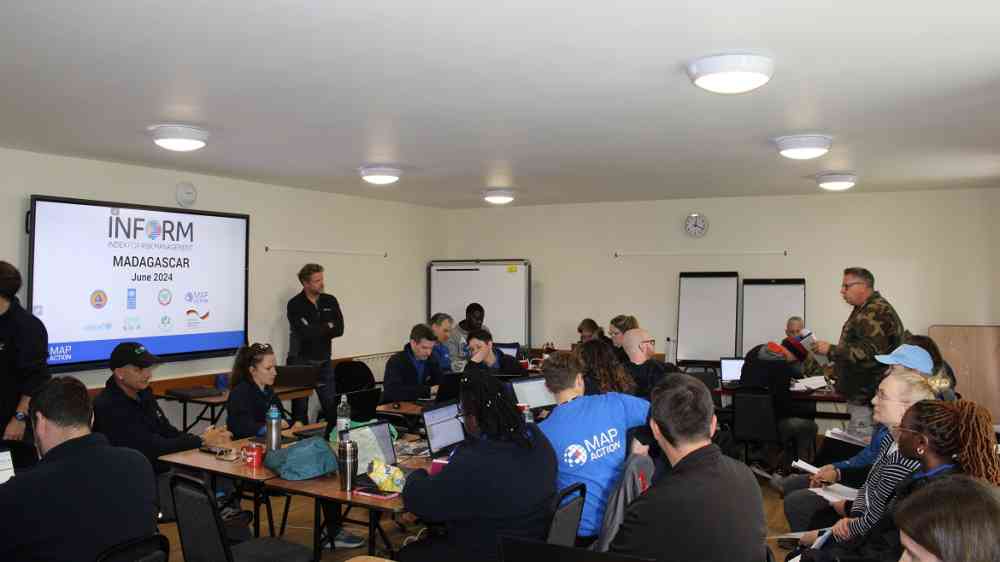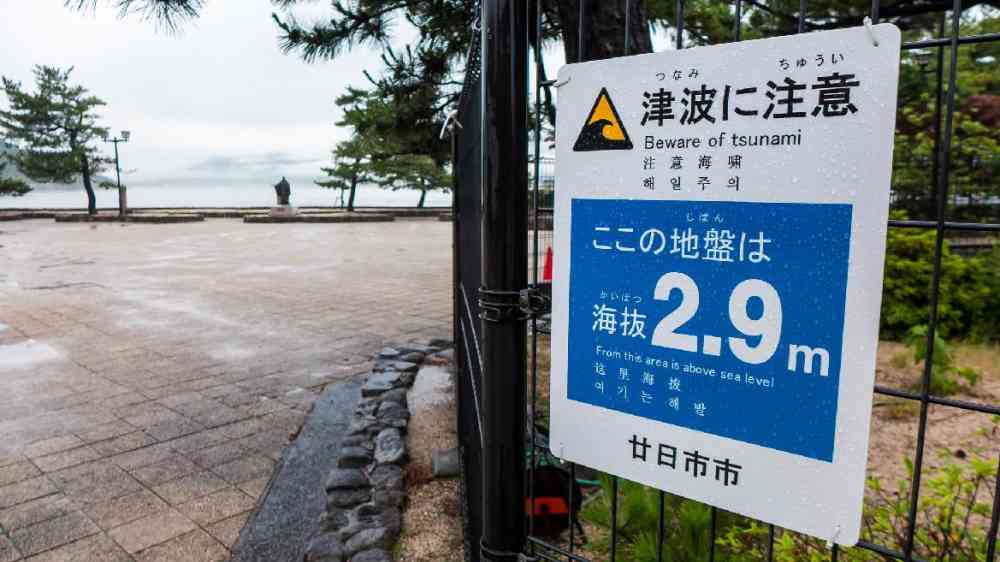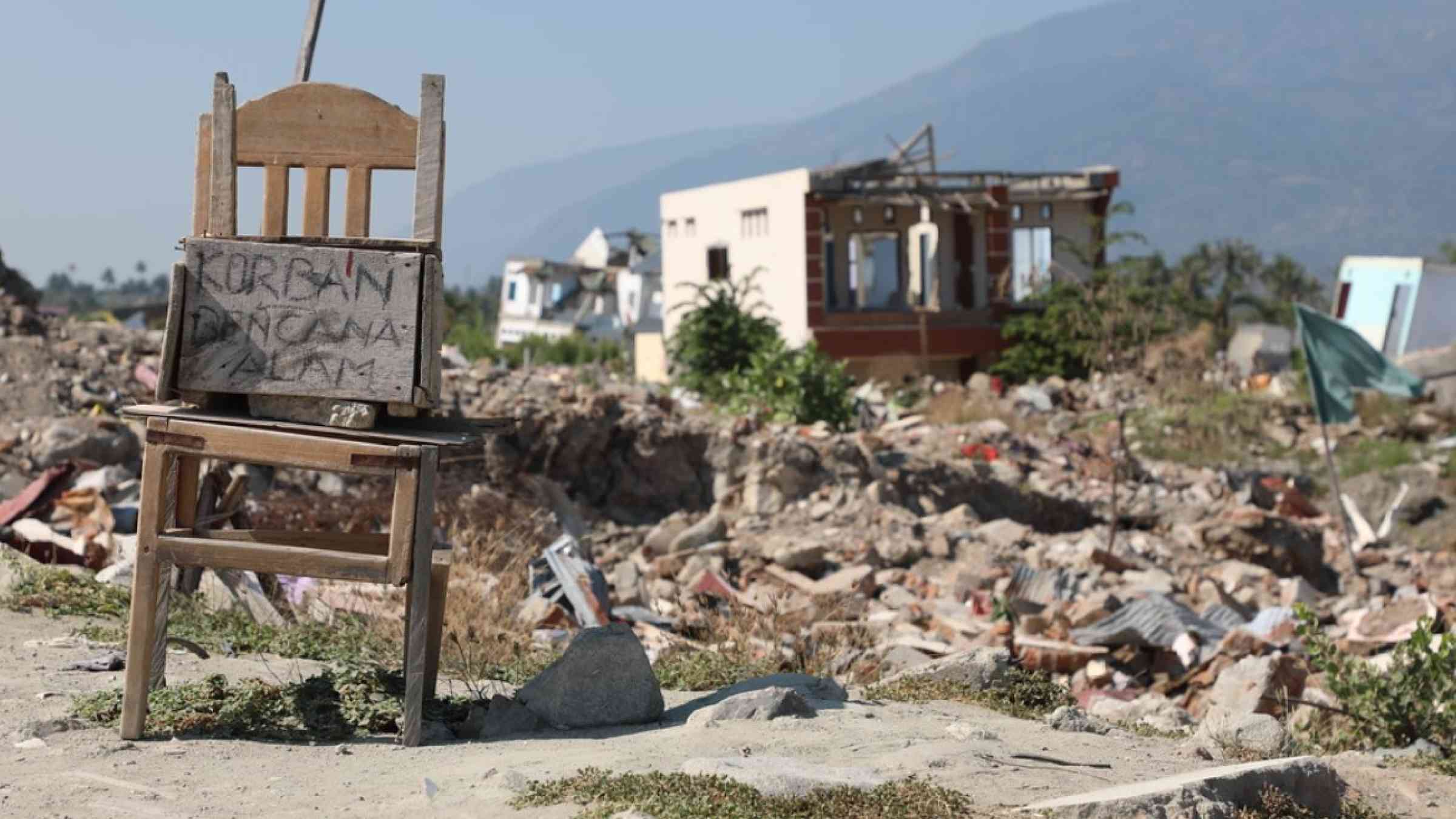Simulation exercises help prepare communities and allow for stress testing plans and systems for effective response. Systems, emergency procedures, contingency plans, response mechanisms, and equipment are tested in these exercises. They contribute to team building and evaluating response skills. Improvements are made in an organization’s preparedness capacities based on the SIMEX results.
Consequently, simulation exercises play an important role in promoting a culture of disaster risk reduction including enhanced preparedness for effective response, as called for by the Sendai Framework for Disaster Risk Reduction. The simulations help prepare communities and allow for stress testing plans and systems. Challenges faced during a crisis, ranging from coordination and security to administrative and technical diffculties, can be reduced by regular exercises. The focus of most exercises is in the practical learning in a safe environment with a strong emphasis on the after-action review or exercise debrief
Different types of simulation exercise
To select the most suitable type of simulation, the goals of the SIMEX should be determined. Consultations with emergency managers and other local authorities on the intended outcomes should be considered before selecting the type of simulation.
Different types of simulation include:
- Table top exercises
- Drills
- Functional exercises
- Field exercises
See below for more information on each type

Table top exercises (TTX) are facilitated discussions, generally in an informal, low-stress environment. An emergency situation is discussed in a constructive manner with the goal of identifying and resolving problems, refining existing operational plans and better understanding each other’s responsibilities, resources and operational procedures. This is the only type of simulation that does not require an existing response plan in place. It usually takes a few hours, depending on the participation. The preparation time for TTX will take as much as one month (ECDC, 2014; WHO, 2017).
A drill is a facilitated and supervised activity, in which single specific operations, functions or systems are tested in a repeated fashion. Its goal is to review and improve a part of the overall emergency plan and should be as realistic as possible, employing any equipment or apparatus for the specific function. Unlike the TTX, drills require actual mobilization and use of resources. A drill can take an hour or a full day, depending on the systems tested. The preparation will take about one month (PAHO, 2011; WHO, 2017).
A functional exercise is a fully simulated interactive exercise that tests the capability of an organization to respond to a simulated event. The exercise tests multiple functions of the organization’s operational plan, such the coordination, integration, and interaction of an organization’s policies, procedures, roles and responsibilities before, during, or after the simulated event. The simulated emergency should be as close to the reality as possible, so that plans can be tested under the corresponding real-life stress level and time-pressure. The goal is to identify gaps in the participants’ familiarity with the plans as well as to look for any mistakes in the plan itself. This type of SIMEX covers various functions in the organization. Therefore, essentially, hierarchies, responsibilities and a chain of commands will be tested. Functional SIMEXs can run several hours or days, and will require 6-18 months of preparation (ECDC, 2014; WHO, 2017).
A field exercise is a smaller version of a full-scale exercise. It focuses on more specific capacities or series of capacities, such as procedures for Rapid Response Teams (RRT), laboratory analysis or other sample collection and transport. A full-scale exercise simulates a real event as closely as possible and is designed to evaluate the operational capability of emergency management systems in a highly stressful environment, simulating actual response conditions. This includes the mobilization and movement of emergency personnel, equipment and resources. Ideally, the full-scale exercise should test and evaluate most functions of the emergency management plan or operational plan. Differing from the Functional Exercise, a full-scale exercise typically involves multiple agencies and participants physically deployed in an exercise field location. The full-scale SIMEX requires a large amount of resources and coordination in all phases of the SIMEX process. It can take a few hours or several days, and its preparation requires a year or longer. The evaluation of the outcomes can significantly improve the system. (ECDC, 2014; WHO, 2017).
Words into Action: Design and conduct of simulation exercises
This companion guide on design and conduct of simulation exercises is part of the Words into Action Guideline series on practical implementation of the Sendai Framework for Disaster Risk Reduction Priority 4 component on enhancing disaster preparedness for effective response. It consists of three main sections: General Information on Simulation Exercise, or SIMEX; the Process; Existing Guidelines.
It targets emergency managers, relevant government officials and many other actors responsible for disaster preparedness planning and drills.
Videos
Play and learn to stop disasters
Build your risk knowledge and strengthen your disaster preparedness
This online game teaches children how to build safer villages and cities against disasters. Children learn through playing how the location and the construction materials of houses make a difference when disasters strike and how early warning systems, evacuation plans and education save lives.






